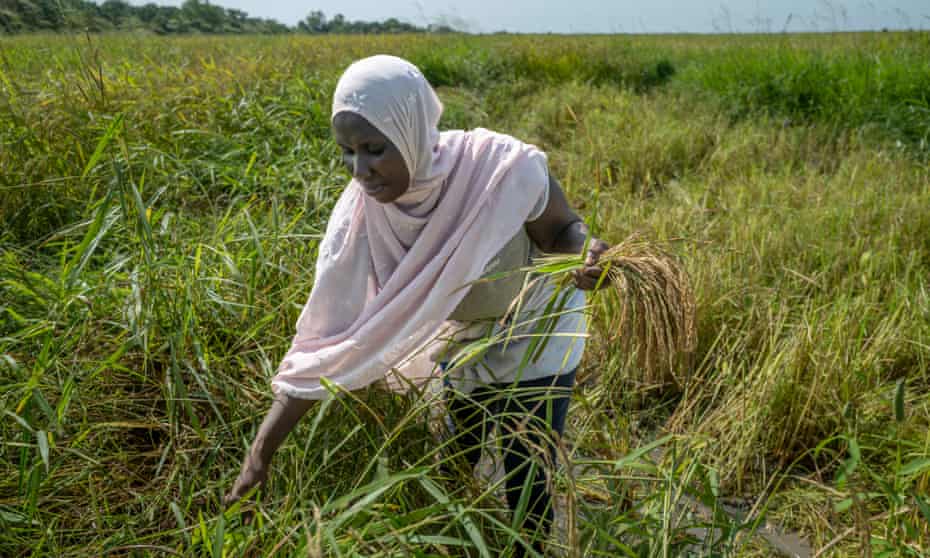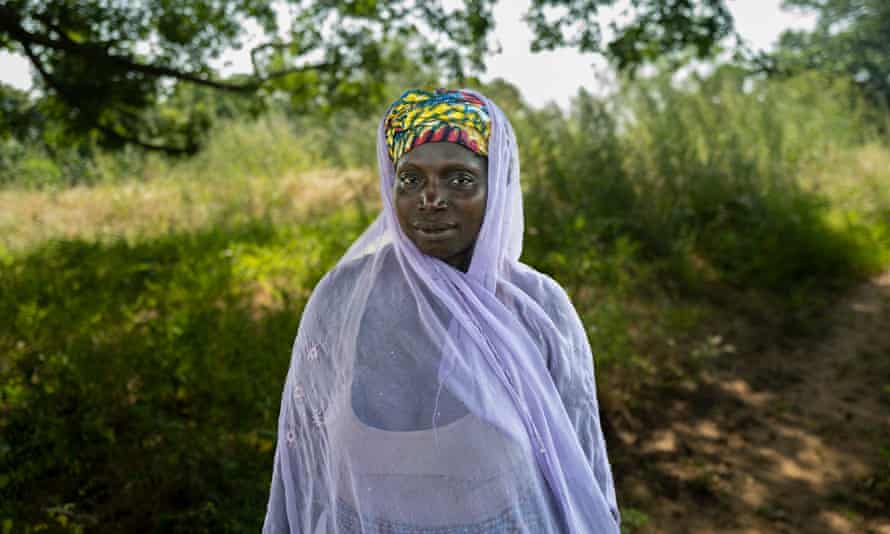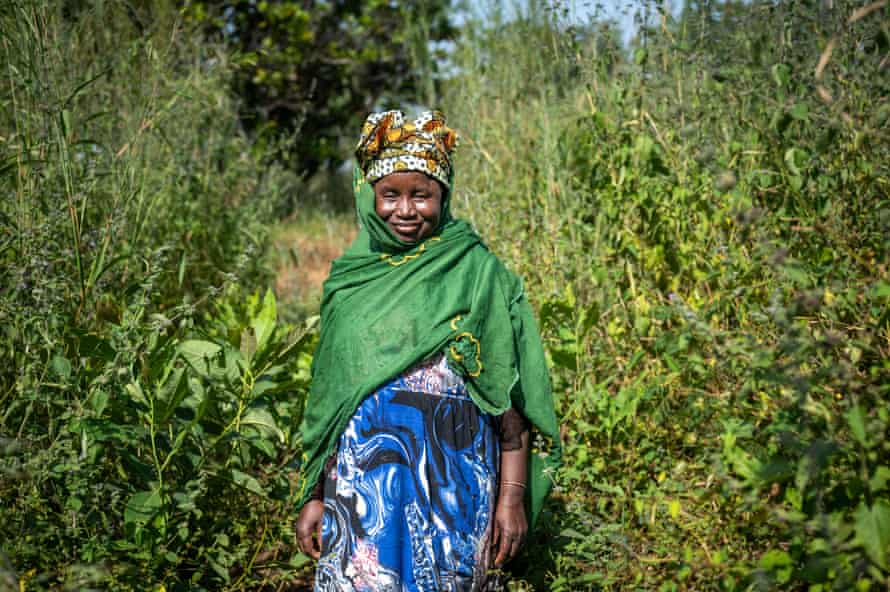‘Taste this, it’s salty’: how rising seas are ruining the Gambia’s rice farmers
The farmers, mostly women, once grew enough but must now buy imported rice as the climate crisis edges them into poverty

In the sweltering heat of the late-morning west African sun, Aminata Jamba slashes at golden rice stalks with a sickle. “The rice is lovely,” she says, music playing in the background as her son, Sampa, silently harvests the grain. But even if the quality is high, the quantity is not.
While once Jamba could have expected to harvest enough rice to last the whole year, this year she reckons it will last three to four months. After that, she will have to look elsewhere for a way to feed her family and make enough money to live.
“Things are different now,” explains Manding Kassamah, a fellow farmer and mother of nine, fresh in from the rice fields, empty water can in hand. “The rains used to come in plenty. People would work and have a good harvest. Now, we work hard but we don’t get as much rice as we used to.”

Traditionally, rice farming in the Gambia has been mostly done by women, while their male counterparts look after the groundnuts. But for years now the female farmers have watched as the land around them becomes increasingly difficult to manage.
Here in Kerewan, on the north bank of the Gambia River, they are battling the climate crisis on two fronts. Rising sea levels are pushing saltwater further and further along the river, which snakes its way across the length of the low-lying country, and prolonged dry spells mean less freshwater to flush out the salinity. The result is that the water in the fields that used to produce rice is now too salty, and the much of the land – more than 30 hectares (74 acres) – has had to be abandoned. For women such as Jamba and Kassamah, that is a disaster.

“These women are pushed out and they don’t have many other livelihoods to turn to like men,” says Muhammed Ceesay, 27, from the youth-led organisation Activista. “It pushes them into poverty. They are very vulnerable.”
The women here are relatively lucky, as they do have an alternative source of food and income in the form of a vegetable garden. They can grow aubergines, tomatoes, peppers and onions, and know that, even if they have dwindling rice supplies, they will have something to sell or eat. “It’s our tomorrow,” says Binta Fatty. “It helps us in so many areas because it helps us stay healthy and to be able to buy small things for our children. That’s why we focus on the garden after the rice fields.”
This backup is essential. Last year’s rice harvest only lasted Fatty about six months before she had to do what in Kerewan would once have been unthinkable: buy imported rice.
In the past 10 years, this has become the norm across the Gambia. “In this community there was a time when, if they saw you buy rice from the shop, they would know there was hunger in your house. Now, it’s the order of the day,” says Almamo Fatty, 63, no close relation of Binta, although the two joke that they are brother and sister.
“I don’t think you will see anyone in this community [now] who will say: I can farm enough rice to feed my family for longer than six months,” he says.

His own is no exception. His son, Kemo Fatty, a climate activist who was part of the Gambian delegation to the Cop26 climate summit, has seen how his mother has become gradually less self-sufficient. “She has to depend on my pay cheque to actually buy rice that comes from China, and this has been happening for the past couple of years now,” he says. “Imagine, from having our own rice that we grew and ate all year round to having no rice at all.”
The Gambian government knows more needs to be done to protect its farmers from the impact of the climate crisis: agriculture is the most important sector of the economy, accounting for about a quarter of GDP and employing about 75% of the labour force.
But, from low technological capacity to poor energy supplies, the challenges for farmers are daunting. Almost all food in the country comes from rain-fed fields, making farmers particularly vulnerable to changes in precipitation.
And female farmers – who are expected to shoulder the burden of caring for their families as well as earning their keep, risk domestic violence as poverty bites, and are often unable to access the contraception they need to control how many children they want – are arguably the most vulnerable of all.
The Gambian climate activist Fatou Jeng, who was also in Glasgow for Cop26, says that although they make up about 70% of the country’s agricultural workforce, women and girls “face inadequate access to basic natural resources needed for farming”.
Writing for the International Rescue Committee website, she adds: “There is a great injustice at the heart of all of this. All too often, these under-represented groups, such as women living in fragile states, understand most about what is at stake and, therefore, the solutions needed to tackle climate change. Yet women in particular have been systematically excluded from the decision-making table.”
In short, if women like Jamba, Kassamah and Fatty are left out of the climate crisis solution, the solution may never be found.

Standing on the boggy banks of a tributary of the Gambia River, Almamo Fatty gestures to the ground, the clay sparkling in the sunshine. “This stuff you see shining? That is salt,” he says, shaving off a thin layer with a machete. “If you taste this, it is salty.” And it is.
“Twenty years ago, if you grew rice here it would grow like this,” he says, gesturing to his shoulder. One field would have produced 20 bags of rice. Now, there are plans for a dyke to stop the saltwater, but he knows life will never go back to the way it was before the climate crisis arrived. “This land here, it was all rice fields,” he says. “Now it’s all abandoned.”
